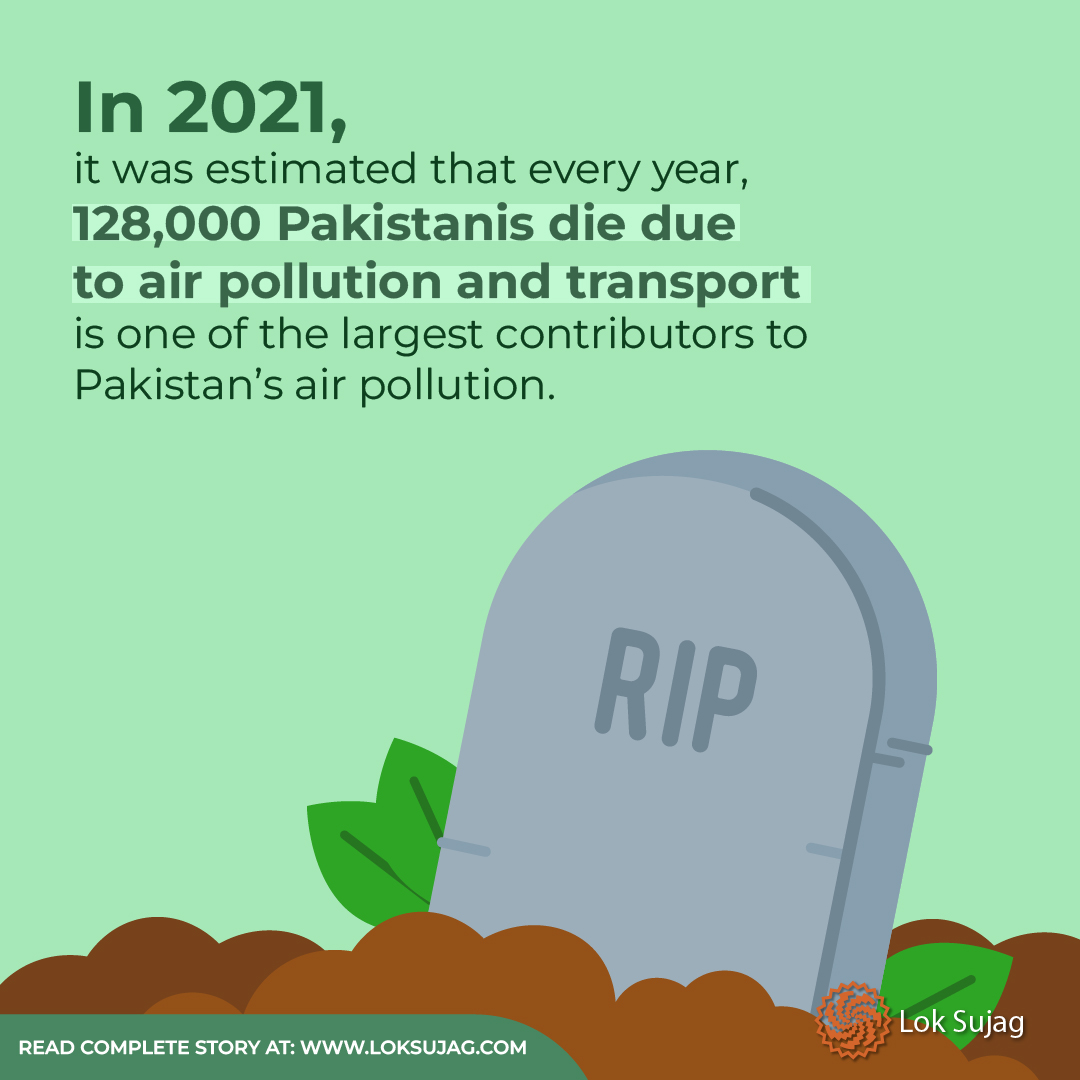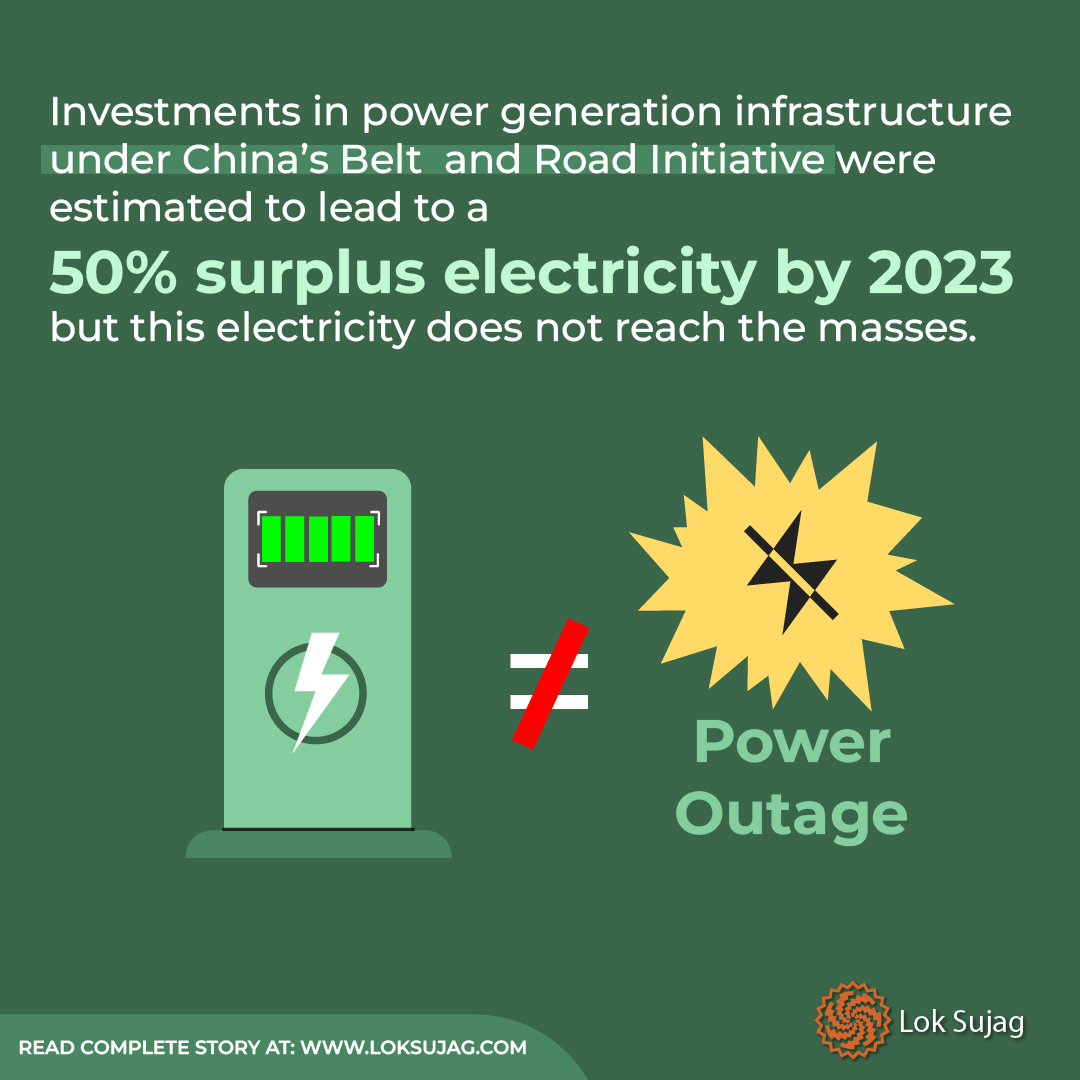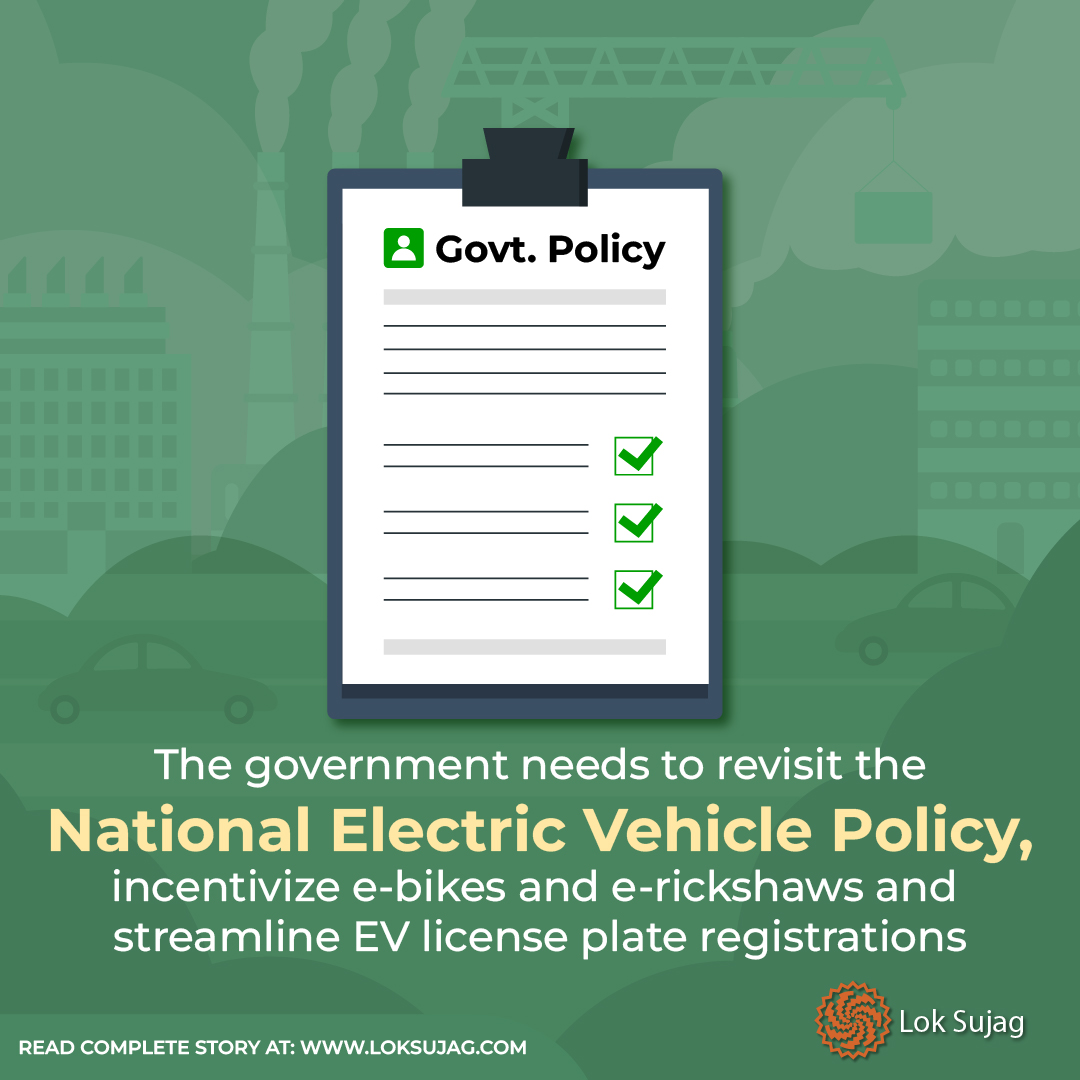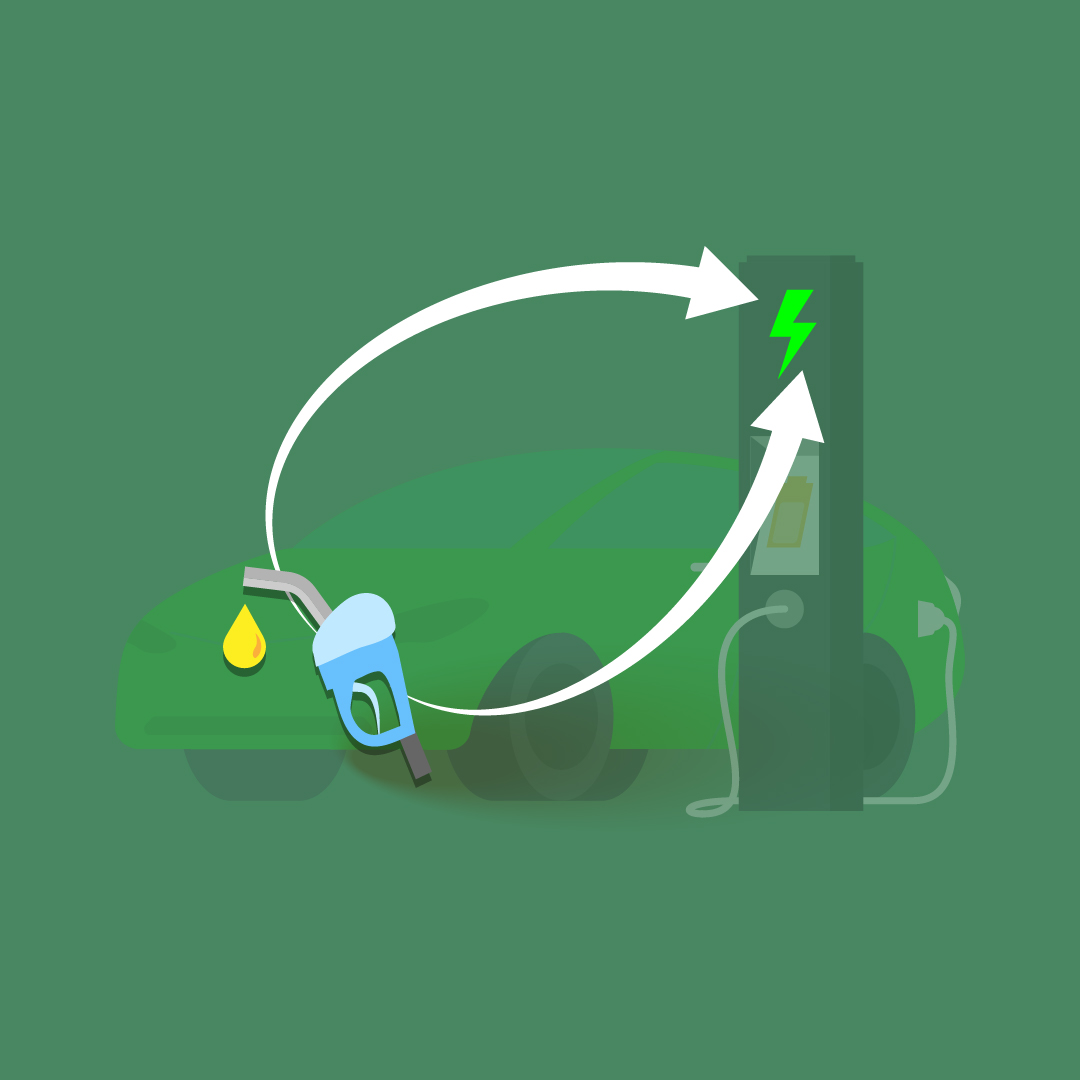Lahore’s air quality index went beyond 500 in 2022. In 2021, it was estimated that every year, 128,000 Pakistanis die due to air pollution. Over the last decade, Pakistan had its 40 millionth case of pollution-related acute respiratory infection.
Transport is one of the largest contributors to Pakistan’s air pollution, accounting for 28pc of carbon emissions in 2021 while private road vehicles make up 95pc of the emissions caused by the transport sector. The healthcare costs associated with air pollution aside, the country loses billions in foregone output every time smog forces schools, markets and offices to shut down. In such a situation, EVs emerge as the easiest way to solve this problem.
An EV emits zero particulate matter compared to a fuel car generating 180 grams of CO2 per km. Switching to EVs would eliminate 30pc of the factors contributing to Lahore’s smog. EVs also emerge as a ‘two birds, one scone’ solution as they will not only lead to mitigation of carbon and particulate matter emissions but would also curb exorbitant import bill for crude oil. As of December 2023, Pakistan's expenditure on crude oil imports stood at a staggering USD 19.4bn. These intertwined issues demand a decisive shift towards electric mobility.
The misguided focus on electric cars
Despite recognising the economic, environmental and social benefits of electric mobility, Pakistan’s approach to EVs has been misguided. Only 7pc of Pakistani households own cars. Even fewer are expected to switch to electric cars, given the high capital cost of cars like Audi’s e-tron. Yet, the tax breaks provided for the purchase of EVs in our National Electric Vehicle Policy (NEVP) are primarily geared toward the shift to electric cars.

In contrast, a staggering 43pc of Pakistani households own motorcycles, with the motorbike industry predicted to reach USD 10bn by 2030. The number of motorcycles and scooters has seen a rise of 928pc over the past two decades. Market research indicates that 63pc of consumers are willing to switch away from fuel-based products due to increasing fuel prices. This presents a compelling case for prioritising e-bikes and e-rickshaws in Pakistan’s EV ecosystem.
Certain myths persist regarding the viability of electric vehicles in the country’s economy that serve as a barrier to transition. The Climate Finance Pakistan, a Lahore-based policy consultancy and venture studio working to ‘make money move for climate action,’ has held consultations with Pakistan’s top two-wheeler and three-wheeler EV manufacturers, and conducted research that dispel myths, misconceptions and misinformation regarding EV ecosystem, including those related to high cost and electricity shortage.
Are EVs too expensive for Pakistanis?
Contrary to popular belief, two-wheeler and three-wheeler EVs are now cheaper than their fuel alternatives in the country. The UNDP conducted a total cost of ownership (TCO) analysis in 2021, comparing EVs with their ICE (internal combustion engine) counterparts over a five years time period.
They considered two kinds of costs: capital expenditure (purchase cost) and operational expenditure (fuel cost, maintenance, battery replacement). While the upfront cost in the case of an e-bike is 50-75pc higher than the ICE equivalent, the operational cost per km is almost 50pc lower than that of an ICE bike. A comparison of Sunra Electric Bike and Honda 125 indicates 40pc lower TCO.

Similarly, a comprehensive analysis of the rickshaw segment illustrates that e-rickshaws have a lower TCO, compared to ICE equivalents for daily usage of over 100km. Given that rickshaws often cover over 200 and 250km daily in urban centres like Lahore and Karachi, respectively, e-rickshaws present a compelling proposition. Sazgar Engineering Works, Climate Finance Pakistan’s impact partner and one of Pakistan’s largest manufacturers of auto-rickshaws, reports that rickshaw drivers save Rs800,000 to Rs1000,000 annually if they switch to e-rickshaws.
Electricity shortage for EVs a real issue or myth?
The independent power producers (IPPs) generate so much electricity that in 2023, capacity payments owed by the government to the IPPs reached Rs2.1tr. In December 2023, the government began talks alongside the World Bank to export its surplus electricity to Kazakhstan, Tajikistan, Uzbekistan, Kyrgyzstan, and other Central Asian States.
This problem was first noted in 2021 by Tabish Gauhar, the special assistant to then prime minister Imran Khan in the power sector. Significant investments in power generation infrastructure under China’s Belt and Road Initiative were estimated to lead to a 50pc surplus electricity by 2023. However, this electricity does not reach the Pakistani masses, owing largely to institutional mismanagement and lack of distribution infrastructure.
According to Mekaeel Malik, CEO of Climate Finance Pakistan, “If the government aims to increase domestic consumption of electricity to reduce its capacity payments to the IPPs, then instead of disincentivizing renewable energy through taxes on solar panels, it should target EVs as a viable path to redirect this excess electricity to.”

It is possible and favorable to redirect this surplus energy toward EVs in two ways. Firstly, this can be redirected toward EV charging stations connected to the national grid and secondly, surplus electricity can be used to charge EV batteries stored at battery swapping stations in major urban centres. This presents a viable solution to support a burgeoning EV ecosystem.
The questions of EVs and green technology
The proponents of the myth that EVs are not ‘green’ because they are charged with fossil fuels overlook the nuanced dynamics of emissions associated with electric mobility. To have a clear picture, the difference between Scope 1 and Scope 2 emissions must be understood and see how electric vehicles affect each.
Scope 1 covers emissions from sources that an organisation owns or controls directly, e.g. from burning fuel in our fleet of vehicles (if they’re not electrically-powered). For the transport industry, this would be the emissions caused directly by the use of vehicles. EVs are inherently green because their Scope 1 emissions are zero in comparison to fuel-based vehicles where a Suzuki Cultus in Pakistan has an emission rate of 105gCO2/km (as per a conservative estimate).
Scope 2 are the emissions that a company causes indirectly and they come from where the energy it purchases and uses is produced. For EVs, this would mean the emissions caused by the charging of the vehicle itself. These emissions may not necessarily be higher for EVs, for two reasons. Firstly, as Pakistan is already producing surplus electricity; charging EVs would mean a pareto efficient outcome where resources are properly allocated. Secondly, charging stations can be solar-based. This is increasingly possible given the influx of cheap solar panels from China, and fall in operational costs of solar panels below the range of operational costs for fuel-based generation systems.
Hence, while Scope 2 emissions can (but not necessarily) be higher for EVs than ICEs, Scope 1 emissions favour EVs over ICEs.
Challenges to EVs mainstreaming and solutions
The road to mainstreaming EVs in Pakistan has logistical and policy challenges. Firstly, the government needs to revisit the National Electric Vehicle Policy, incentivize e-bikes and e-rickshaws and streamline EV license plate registrations across the country to facilitate local manufacturers. Secondly, it should provide installment plans for purchase of e-bikes and e-rickshaws to help consumers overcome the high initial capital cost.
Also Read

How Much Air Pollution Can EVs Reduce?
A bike scheme was launched by the Punjab government this year under the Chief Minister's Youth Initiative where 20,000 bikes were to be provided to the students on easy installments. However, contrary to advertisement as a ‘green’ venture and claims on the official website of the scheme titled “E-BIKES”, only 1,000 out of 20,000 bikes were actually electric.
Dawar Hameed, ESG & sustainability consultant at NADIA Global, highlights another critical policy measure that may make or break Pakistan’s EV ecosystem. He says the usage of lead acid batteries (LABs) in local e-bikes should be banned to be replaced with lithium-ion batteries.
“Lead pollution is an inherent problem with the LABs,” says Dawar,
“The average life cycle of LABs is six months, in comparison to three to four years for lithium-ion batteries. This means more batteries will be disposed of, most likely in rivers and open dumps, which will create a major pollution and public health issue. LABs already have an illegal reuse industry in Pakistan, which is extremely hazardous for occupational health & water pollution.” Dawar thinks the shorter life span of LABs would create consumer trust issues in the EV products, harming the long run conversion to EVs in Pakistan.
It is possible and favorable for Pakistan to achieve its nationally determined contributions (international commitments to reduce their greenhouse gas emissions) on 30pc of all new vehicles sold in the country by 2030 to be electric. Acting on policy recommendations based on regionally robust data is imperative to this transition.
Published on 22 Aug 2024




















